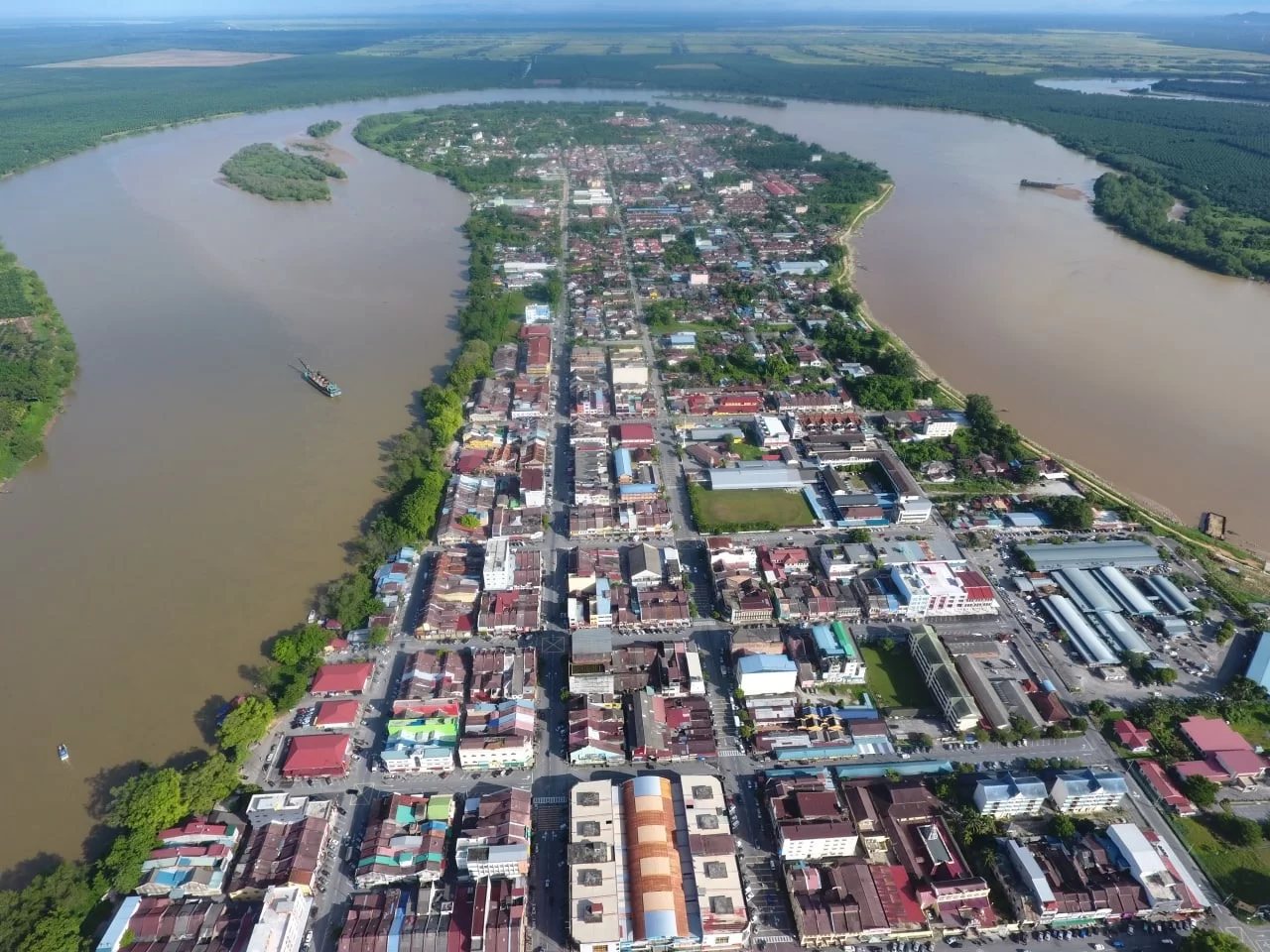Whether you’re an adventurer hailing from a whole different country or simply a local who ever feels like you need a time out from the vibrant hustle and bustle of Kuala Lumpur, then it is absolutely worth setting some time aside to visit one of Malaysia’s most popular wonders, Batu Caves.
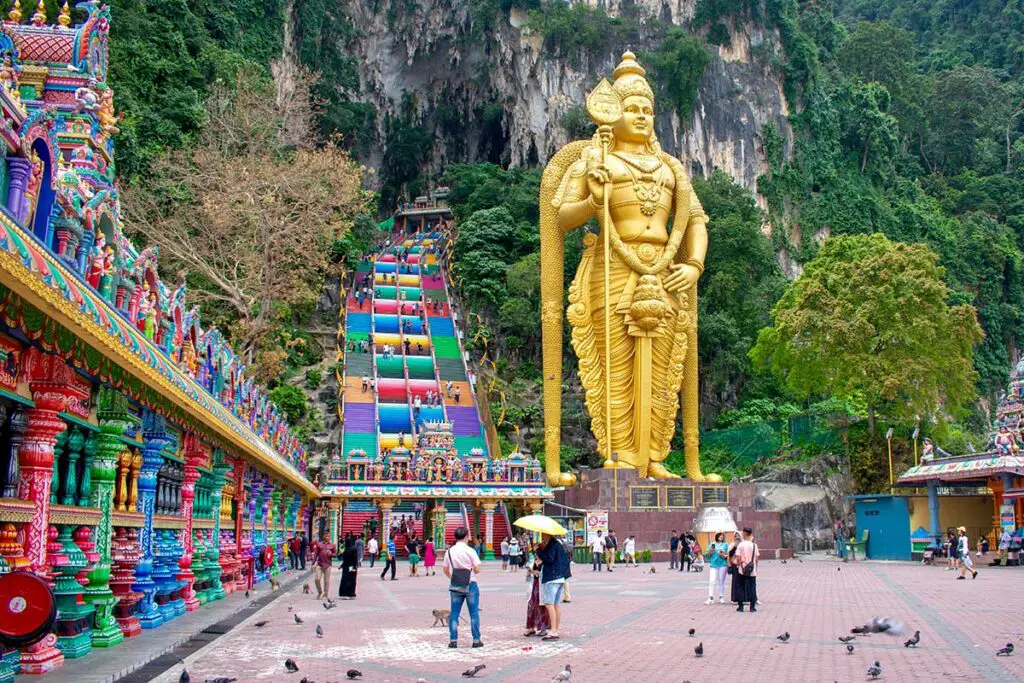
Carved straight out of limestone cliffs that had been on the earth since over 400 million years ago, Batu Caves is not only a series of natural formations–in fact, it is one of the most well-known Hindu temples outside of India!
So, what can you do at Batu Caves and is there anything interesting to explore? Continue reading below to find out more.
How to Get to Batu Caves
Of course, you can reach Batu Caves by driving or ordering a Grab car, but public transportation is always a good option–what’s best is you can save yourself from the stress of going through a traffic jam!
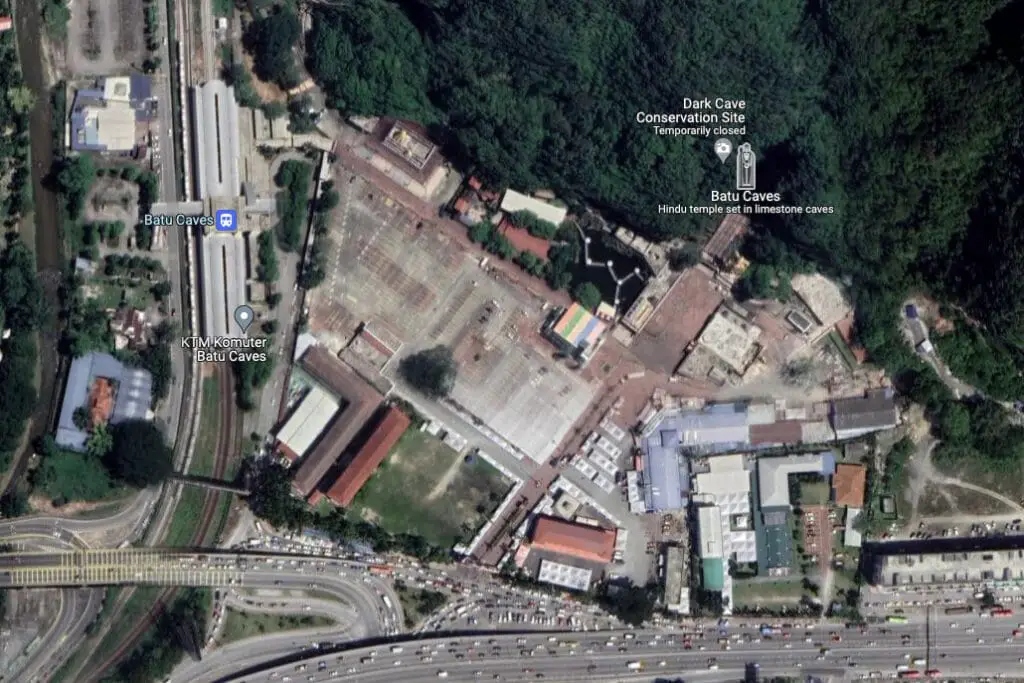
If you prefer to save the environment and take public transport, you can do so via the KTM commuter. Assuming you’re from the heart of Kuala Lumpur, take the KTM from KL Sentral to the KC05 Batu Caves Komuter station, which takes approximately half an hour. From the station, it is only a short walking distance to the temple
Things to Keep in Mind Before Visiting Batu Caves
Before heading out of your home, be sure that you’re dressed modestly since Batu Caves is a religious site–it’s best to cover your torso up until your knees. The caves are also open from 7 am to 9 pm daily and there’s no admission fee if you’re planning to visit only the main cave (the Temple Cave). If you plan on visiting the Ramayana Cave, a small fee of RM 5 is charged, so prepare some small changes!
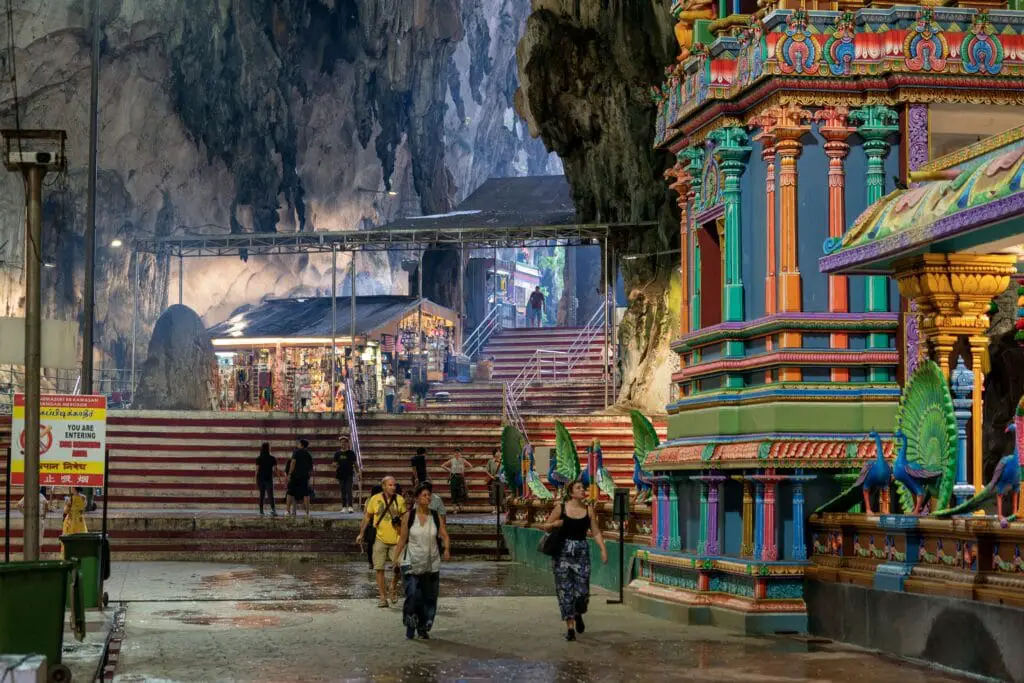
Since the Malaysian weather can be unforgiving at times, it is wise to bring a bottle of water with you. If it’s not the scorching weather that leaves you thirsty, it could be the steps that you have to climb.
Remember to keep your eyes wide open for the curious monkeys scattered around the temple complex. They can be pretty aggressive at times and they’re also known to snatch personal belongings from unsuspecting visitors!
If you wish to witness a unique experience, visit the Batu Caves during the annual Thaipusam festival. During this time, the temples would be filled with people as it becomes a dazzling spectacle of colour, sounds, and cultural immersion.
Things to Do at the Batu Caves
Admire the Majestic Statue of Lord Murugan
Once you’re nearing Batu Caves, it’ll be absolutely hard for you to miss the towering statue of Lord Murugan who is a prominent deity in Hinduism. This magnificent monument is fully cloaked in gold paint, making it shimmer under the bright Malaysian sun.
Standing 140 feet into the sky, it has been regarded as one of the tallest Lord Murugan statues in the world–and the tallest in Malaysia!
Climb the Vibrant Staircase
Some said you can never say you’ve explored Batu Caves without climbing the 272-step colourful staircase which leads you directly to the main highlight of the complex, the Temple Cave. A little fun fact–the staircase was first constructed in 1920 and the steps were initially built from wood.

It was only in the later years that they were replaced with stronger concrete aimed to support heavier foot traffic. Many would also stop halfway up and snap a photo or two with the colourful steps as their background–even the popular Malaysian singer, Yuna, shot one of her music videos on the iconic steps!
Whether you’re a fitness enthusiast or simply a curious traveller, completing the climb surely does have a reward; on top, the views of Kuala Lumpur’s skyline become amazingly panoramic.
Plus, climbing these steps is not merely a physical challenge. Believe it or not, it is also part of the pilgrimage many Hindu devotees undertake.
Marvel at the Temple Cave
Once you’ve reached the last step of the staircase, you’ll reach the Temple Cave or also known as the Cathedral Cave.The high ceiling that hangs roughly 295 feet above your head, accompanied by several stalactites, and the ethereal sun rays shining through the openings surely do create an atmosphere of serenity. The sacred Hindu Shrines built within the cave further transformed the site into a unique sight.
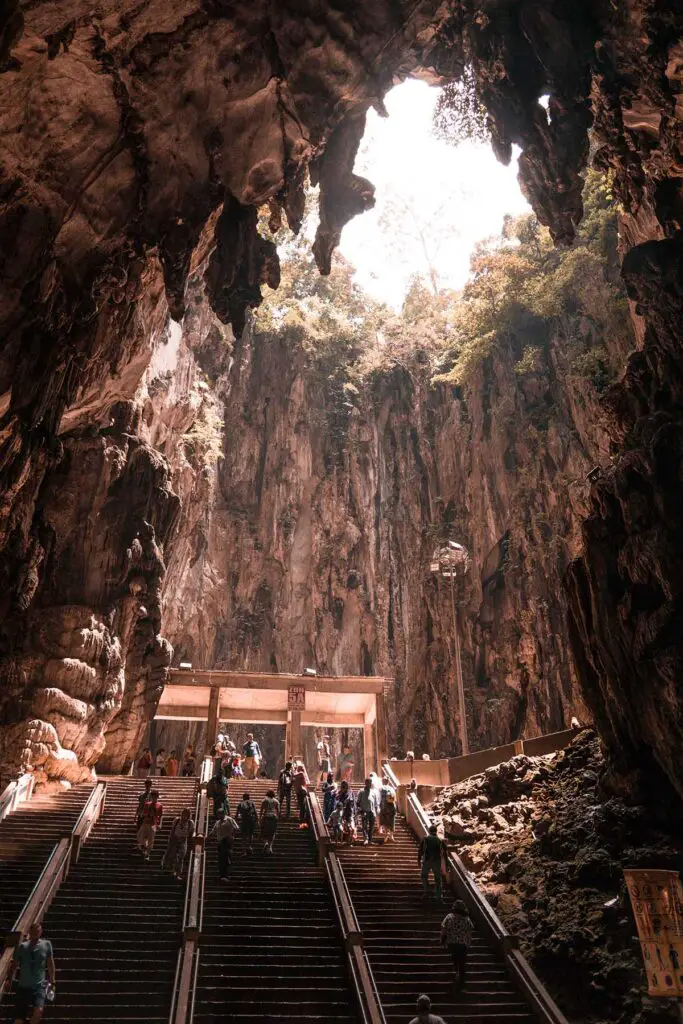
Don’t forget to explore further to the end of the cave until you find a smaller set of stairs that leads to yet another open-air cavern. This is where you can find the Sri Valli Deivanai Temple which is constructed in honour of the wife of Lord Murugan.
Apart from the Temple Cave, visitors can also find the Dark Cave which was once accessible when you reach the midway point of the colourful staircase.
Unlike the rest of the cavern, the Dark Cave stays true to its name; it is nearly pitch dark and is said to be the home to a few rare species of spiders. Unfortunately, access to the Dark Cave is no longer available as it is currently temporarily closed.
Explore the Ramayana Cave
Before concluding your exploration, it’s worth spending a bit more time visiting the Ramayana Cave. Located by the large statue of the Hindu God Hanuman, this cave appears to be rather smaller than the rest. Nevertheless, its interior alone can definitely impress you.
Filled with dozens of statues and shrines, you can even learn a thing or two about the engaging Hindu mythology. This cave is best known for its vibrant colours, a feature that is completely the opposite of the Temple Cave.
A trip to Batu Caves promises an experience rich in history, culture, and natural beauty, so it surely is a great destination to visit at least once in your entire lifetime.
Whether you’re a curious foreign traveller interested in diving deeper into the colourful Malaysian culture, or a local adventurer who’s looking for a one-of-a-kind day out, Batu Caves has a little something for everyone!
FAQs about Batu Cave
1. When was Batu Caves built?
It was established in 1891 as a place of worship by K. Thamboosamy Pillai, an Indian trader who was amazed by the vel-shaped (vel is a type of spear often associated with Lord Murugan) entrance of the main cave.
2. How high is Batu Caves and how many steps are there?
The limestone hills are over 100 metres in height and it takes 272 steps to reach the Temple Cave.
3. What is so special about Batu Caves?
Words are not enough to describe the uniqueness of Batu Caves. Its natural beauty, with the dramatic formations of million year old limestone, and its cave systems are some of the most impressive features of the site.
The religious complex is also under the careful watch of one of the world’s tallest statues of Lord Murugan which stood 149 feet in height.



